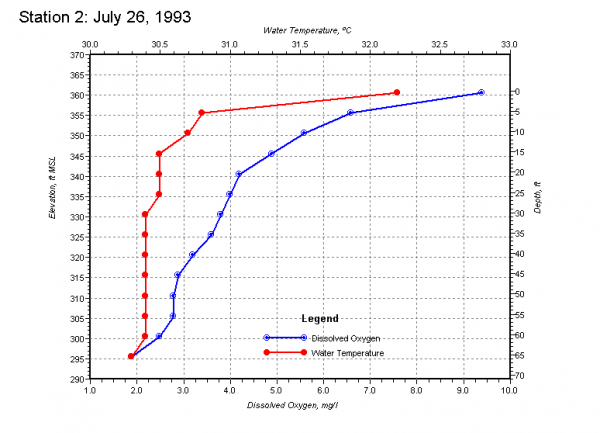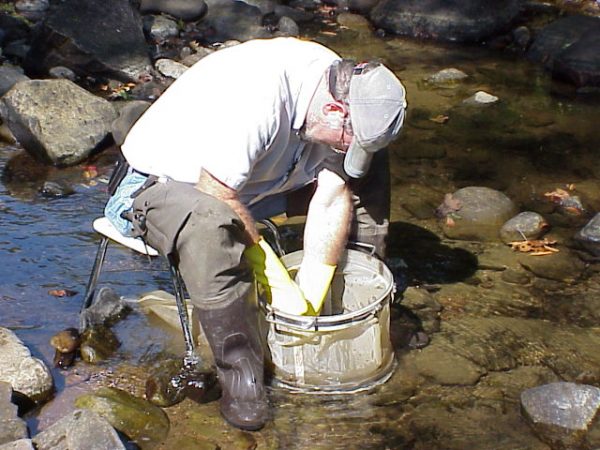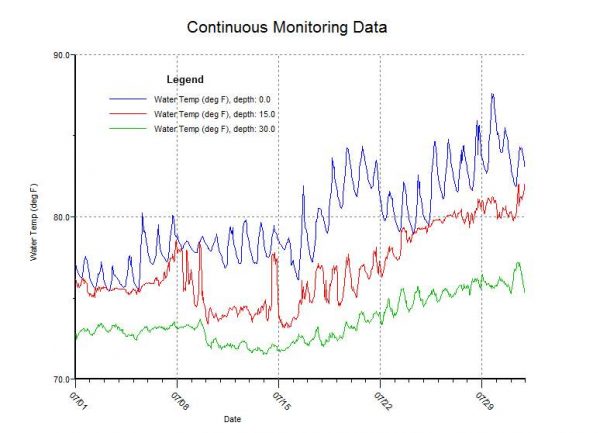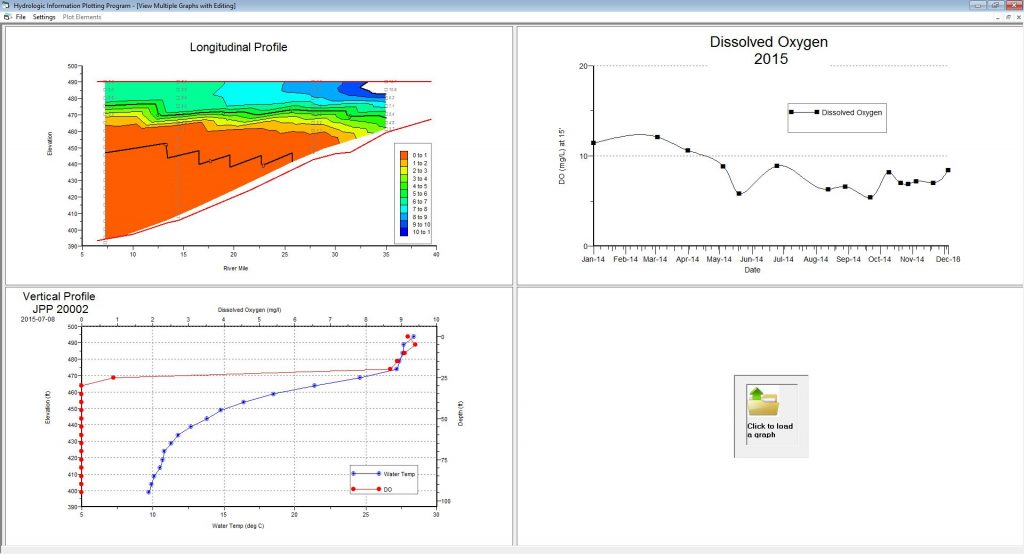Gerald Burnette’s software for managing surface water quality data, the Data Management and Analysis System for Lakes, Estuaries, and Rivers (DASLER, pronounced like “dazzler”), has been designated as the only officially supported software for this purpose by the U.S. Army Corps of Engineers (USACE). This designation paves the way for integration of DASLER with the USACE’s Water Management System (CWMS). Also, because the project was funded with public money, any company that wants to manage water quality data may now obtain and use DASLER for no charge.
DASLER’s Development
Burnette (who is a senior project manager in CEC’s Water Resources Practice at CEC’s Nashville office) has been developing the software for over 22 years. It originated as a local application for the Nashville Corps District to address a problem for which the Corps had been struggling to find an adequate solution.

In the early 1990s, the USACE was looking for ways to manage both water quality and water control data. It opted to develop something in-house for water control, which later became CWMS. The USACE opted to purchase commercial software for water quality, choosing a product called EQuIS. To test the applicability of the product, EQuIS was deployed in The Ohio River Division (consisting of four Districts: Huntington, Nashville, Louisville, and Pittsburgh). The Division used it for a few years, but the test was not completely successful due to several issues. EQuIS was originally designed for managing groundwater, so the data model was not a great fit for the surface water mission. Furthermore, the user interface was difficult to navigate. In 1996, Burnette was working for Environmental Consulting Engineers (ECE, in Knoxville) performing hydrology services. The USACE gave ECE a small work order for creating plots from data to be extracted using EQuIS. Everyone likely thought that was as far as it would go.
However, Burnette identified technical issues in EQuIS and suggested developing a better system. Using the VB6 coding language, he began work on what would become DASLER. By 1998, the new system was in full use by the Nashville District, and ECE migrated Nashville’s data out of EQuIS and into DASLER. That same year, the Louisville District became the second district to use DASLER. From there, it caught the attention of Pete Juhle at USACE headquarters. Juhle directed the Hydrologic Engineering Center (HEC) to become involved with DASLER and took steps to adopt the product Corps-wide. Juhle retired in 2001 before DASLER was officially implemented, and the initiative faded away for the time being.


In the intervening 18 years, the DASLER software continued to advance, but still only as far and as fast as could be driven by individual District needs. Currently, 11 of the 36 stateside Districts use DASLER (but note that not all Districts have water quality missions). Until last year, all of that growth was driven by word of mouth. Districts continued to invest money in new features and capabilities in a grassroots fashion as each determined that DASLER was the best option for accomplishing its water quality data goals. Local Districts funded improvements to the benefit of all users, such as DASLER’s ability to provide public access to USACE water quality data through mechanisms developed by EPA—first, STORET, and then the Water Quality Exchange (WQX). At one point, the product diverged into multiple DASLER versions customized for various users. For example, Duke Energy and the Tennessee Valley Authority wanted their own versions. To accommodate companies/organizations that didn’t have the money to pay for a customized version, Burnette developed a generic version called DASLER Pro that included the most commonly used features (as well as introducing some new ones). DASLER Pro was offered as commercial software, and was purchased by organizations such as the Washington Suburban Sanitary Commission. The most recent development activity is being funded by the Nashville, Louisville, Omaha, and Kansas City Districts. Under this work order, the original DASLER and DASLER Pro will be merging back into one version, which will then be the baseline for the official USACE DASLER product.

Interestingly, CWMS itself has taken more than 20 years to develop. The focus of CWMS to this point has been on water quantity management: dam operations, flood control, etc. It was only deployed in the last few years and is not completely integrated into USACE water management operations yet. Some Districts have not yet begun using CWMS for their water control operations.
As the USACE looked at options for integrating water quality data with CWMS, the final choice came down to two competing products: DASLER and a commercial product called Aquarius. The USACE Advisory Group (AG) on water quality commissioned a team to analyze the situation and to come up with a recommendation. Burnette and Mark Campbell from the Nashville District of the USACE were tasked with creating a comprehensive list of all DASLER functionality for the group’s evaluation. Campbell completed two presentations over the past year to provide the team with a more complete understanding of the DASLER product. The USACE team determined that DASLER was the better choice both because DASLER offered more features than Aquarius and because the USACE had better control over DASLER’s future direction (because it paid for DASLER’s development). The team made its recommendation to the AG late last year, which paved the way for the recent decision.

Burnette is a strong devotee of CEC’s philosophy of unwavering commitment to client needs, and he attributes this mindset to DASLER’s sustained growth over so many years. Case in point: the day before Burnette shared this story with this CEC writer, he spent an hour modifying part of the functionality to accommodate one user’s issues regarding importing lab data and field data in the same file; Burnette knew there might be other DASLER users facing the same questions.
What’s Next for DASLER?
Integration of DASLER into CWMS will take time. There are some big steps to be taken: the desktop client interface will finally be moved from an aging VB6 code base to VB.NET, and the database backend will migrate to ORACLE. The current work order for merging the different DASLER versions is the first step in this direction. The complete migration process is scheduled to take at least two years.
Burnette will also be helping integrate DASLER data into USACE’s public website called Access to Water, which provides both water control and water quality data using CWMS. DASLER will become a new piece within CWMS but will also be allowed to continue operating independently.
As the DASLER community grows, more management and analysis capabilities will evolve. Some new tools and options that have already been proposed include advanced habitat assessment capabilities and mobile apps to load data from the field directly to the database. Another goal for the next five to seven years is to increase the number of USACE modeling tools that link directly to DASLER. Current model links are for water quality-only models; as the USACE pushes its modeling tools further into combined realms, water quality capabilities of models like HEC-RAS are likely to become prominent DASLER data consumers.
If you have any questions about DASLER or about how it can help you achieve your goals, please contact Gerald Burnette at gburnette@cecinc.com or (615) 577-9333.
Related blog posts
- 2019 CEC Innovation Award Recipients Announced (May 15, 2020)



Post a Comment